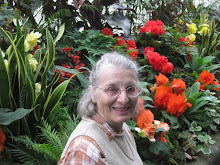Kia ora!
"Ladies and gentlemen," Loc began. Never mind that there was just KC and me. We were his tour group
 |
| Loc, Cham museum |
and this is how he began his prepared information. We were at a museum in Da Nang that documented statuary from the Cham culture that populated this area in ancient times. The artistry is similar to that we observed in India and reflects the spread of Hindu influence from India through Cambodia (Ankor Wat) to Viet Nam.
Loc was part of the South Vietnamese military during the American War, as it is known here. His was a family of divided loyalties. He describes how his older brother informed the family that he was going to become a Buddhist monk and disappeared. Later he reappeared in the uniform of the North Vietnamese Army. He had been a secret guerilla. Their mother was overjoyed. When Loc's side lost the war, he was sent to a reeducation camp. His brother secured a high position in government. In talking with the commandant of the camp one day, Loc mentioned his brother. The commandant said, "Oh, he is my friend." Things were better then for Loc and he was soon out of the camp and sent to school. He earned a Masters' degree and was a teacher of physics until he retired from that position.
 |
| China Beach |
Our hotel was on the famous (from TV and war fame) China Beach. I rose early both mornings we were there and walked on the beach. There was a lovely friendly encounter with a local woman in which we spontaneously began Tai Chi together and shared lots of smiles. I didn't spend much time in the water, but wished I had more time to do so.
Had my brother, Dodd, killed in Vietnam in 1976, walked on this beach? He was killed in Operation Masher, which I thought originated from Da Nang. Just being in this area of the country made me feel closer to him. Loc took his name, date of death, and the unit he was with (Army 1st Calvary, Air Mobile). Then he informed me that Dodd's unit had not been in this area. I confirmed this later at a museum in Saigon that
 |
| War casts a long shadow |
mapped where each American unit had been placed and how long they were there. He apparently died about 130 km. south of Da Nang in Bien Hoa, as Loc had said. I had the sense from Loc that Americans looking for specific battle sites where they lost loved ones was common. I was impressed with how seriously he took my quest.
As in Washington, DC, where my brother will be forever remembered, a similar Viet memorial with many more names
 |
| One half of Viet wall |
stands on an isolated hill.
Most of our time with Loc and driver Kieh was spent driving through the countryside, a valuable introduction to rural Vietnam in itself. We viewed a river where there had been a bridge built by the Seabees, but had
 |
| A pastoral Hill 51, perhaps? |
since fallen away, replaced by ferries. The locals wished the bridge was still there. We drove to various hills that had been fought over, won only to be reoccupied by Viet Cong when the Americans moved on to another hill. When noon came, we stopped at a humble, rural open front restaurant for pho. From our experience in Hanoi and now here, I got the impression that the professional guides are instructed to expose the tourists to local foods and food purveyors. I wouldn't have
 |
| Lunch here |
it any other way.
Cheers,
Kiwi Traveler











No comments:
Post a Comment